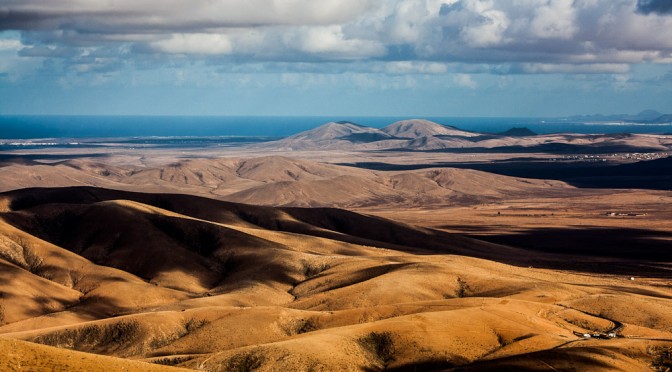DAY 3
Today, on this third day of tour around Fuerteventura, we suggest putting aside sport activities, as we have already had enough of them for the last two days (here we leave you the links for days 1 and 2 of this tour, in case you haven’t read them yet).
As Fuerteventura is not only the north, which is what we have been visiting so far, on this third day we suggest a trip to the centre of the island so you meet the inland villages, which keep a great deal of the history of this island.
We’ll set off from Corralejo taking the FV-101 towards the centre of the island. The first thing we’ll find on our way will be the small village of Villaverde, on the mountain side of Escanfraga, the highest volcanic cone on the island.
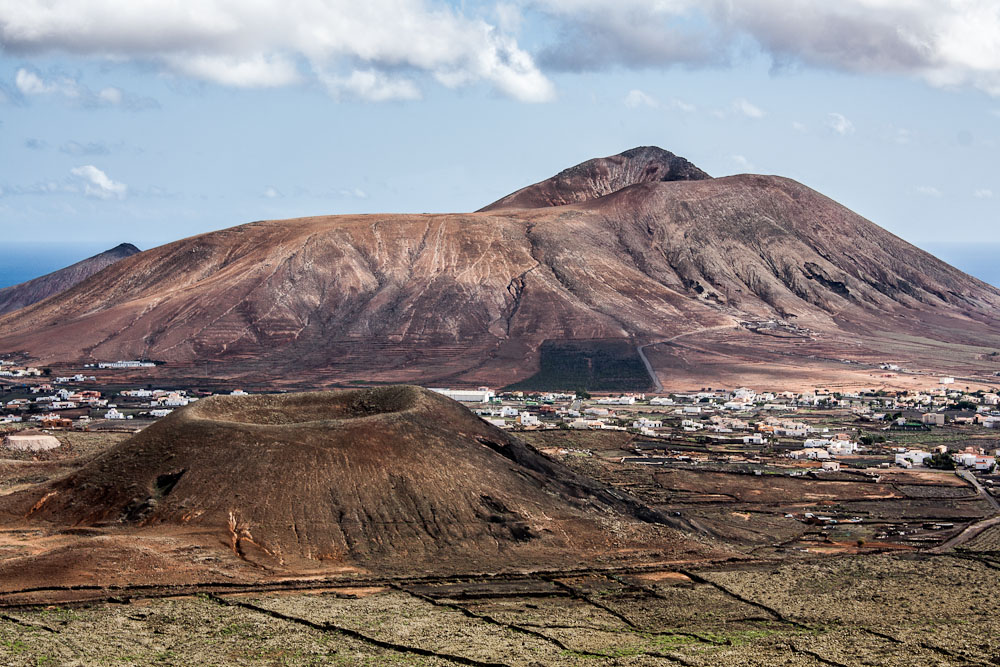
In Villaverde you’ll find the Museo de la Cueva del Llano, an underground lava tube which visitors can go through, provided with helmet and frontal lantern, while guides tell about the volcanic origin of Fuerteventura and the curiosities of this land thousands of years ago. We must highlight that Fuerteventura is the oldest of the Canary Islands and that the last volcano that erupted did it 10.000 million years ago (Monaña de la Arena).
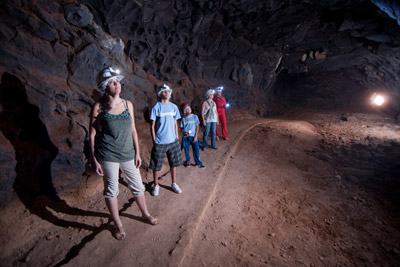
From Villaverde we’ll go on inland, passing through the village of La Oliva, which is the head of a municipality in the notth of Fuerteventura, where you can visit “La Casa de los Coroneles”, an ancient fortress from the second half of the XVII century, which today is used as an exhibition hall, showing the life on the island at a time of all-powerful landowners.
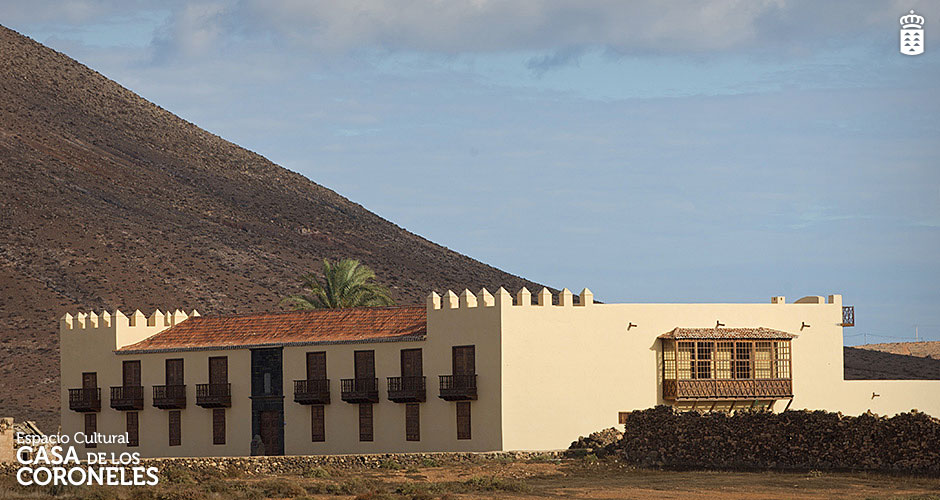
We keep going southbound, through the village of Tindaya and its holy mountain, which has given rise to many discrepancies at present due to the controversial work which is to be carried out inside it; and from there we go on to Tefia, taking the FV-207 after Tindaya.
Once we go past Tefia we’ll take the FV-30 to Betancuria, a quite winding and narrow mountain road, so we recommend extreme caution when driving.
The lookout point Morro Velosa (669m), designed by the versatile man César Manrique, will welcome us to let us see one of the most breathtaking views on the island. Beside it, we’ll find the statues of Guise and Avose, two ancient warriors who ruled in aboriginal Fuerteventura, when this was divided into two big groups.
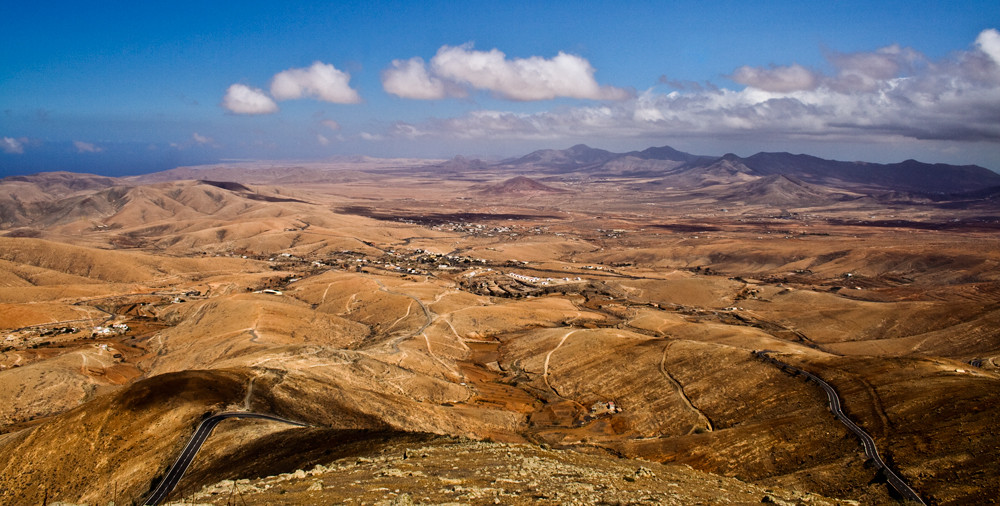
In the valley, Betancuria looks quaint, like a haven of peace and white houses among a green and lush vegetation, very different from the rest of landscapes in Fuerteventura. This greenery and fertility were the reasons why conquerors settled in this land the first capital of the islands, back in the XV century. We must highlight the visit to Santa Maria Chuch-Cathedral, one of the most impressive historic buildings on the island.
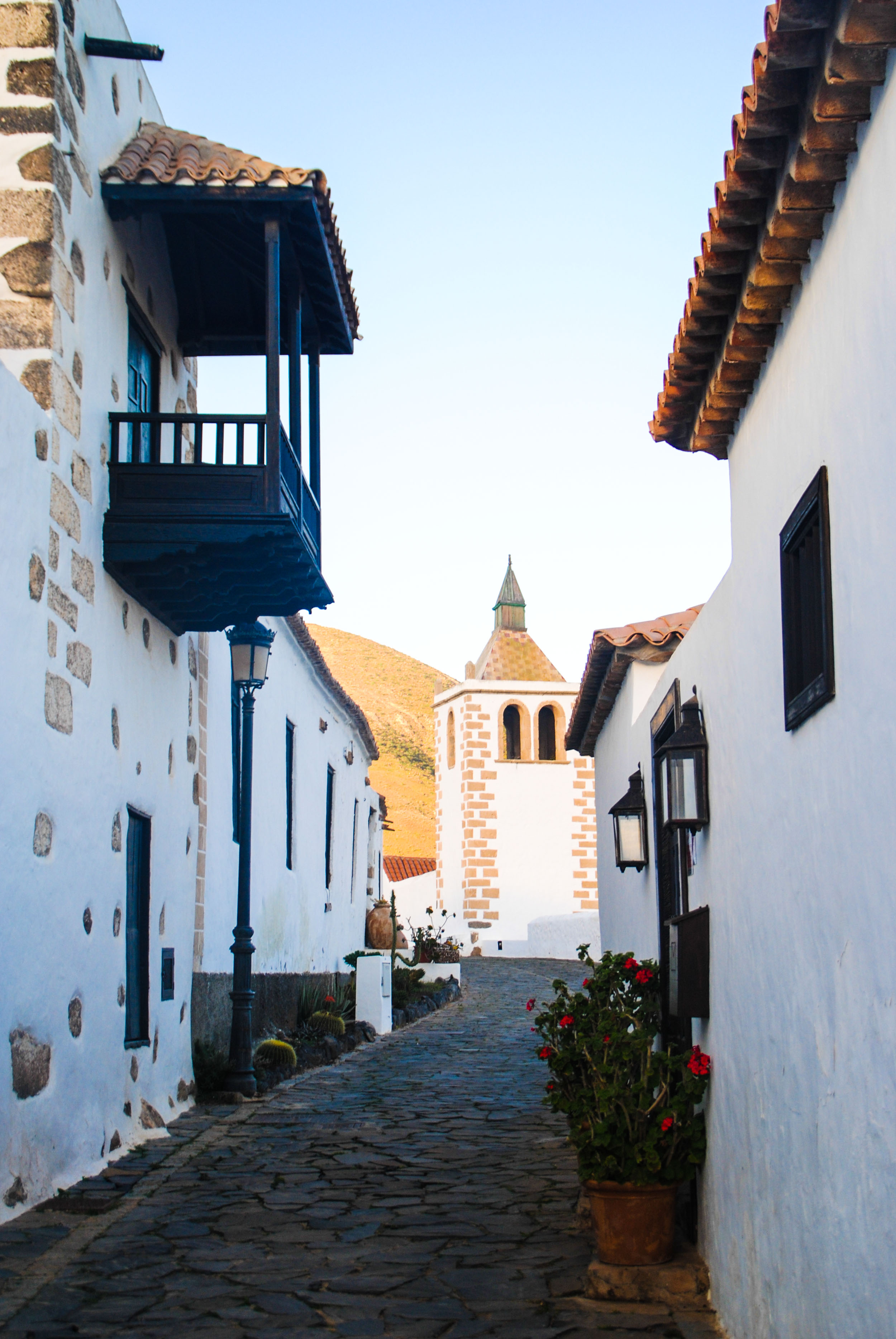
We keep heading south, discovering treasures of Fuerteventura. The next urban core we go through is Pájara, where visitors going on tour from north to south are very common. The shrine of Nuestra señora de Regla, in Pájara, has a precious main altarpiece, restored a couple of years ago by master craftsmen from our island.

And from Pájara we’ll head to the Western coast, taking the FV-621, until getting to the little village of Ajuy, a haven for fishermen with a gorgeous black sand beach and stunning caves which tourists can visit following a signposted route along the coastline.
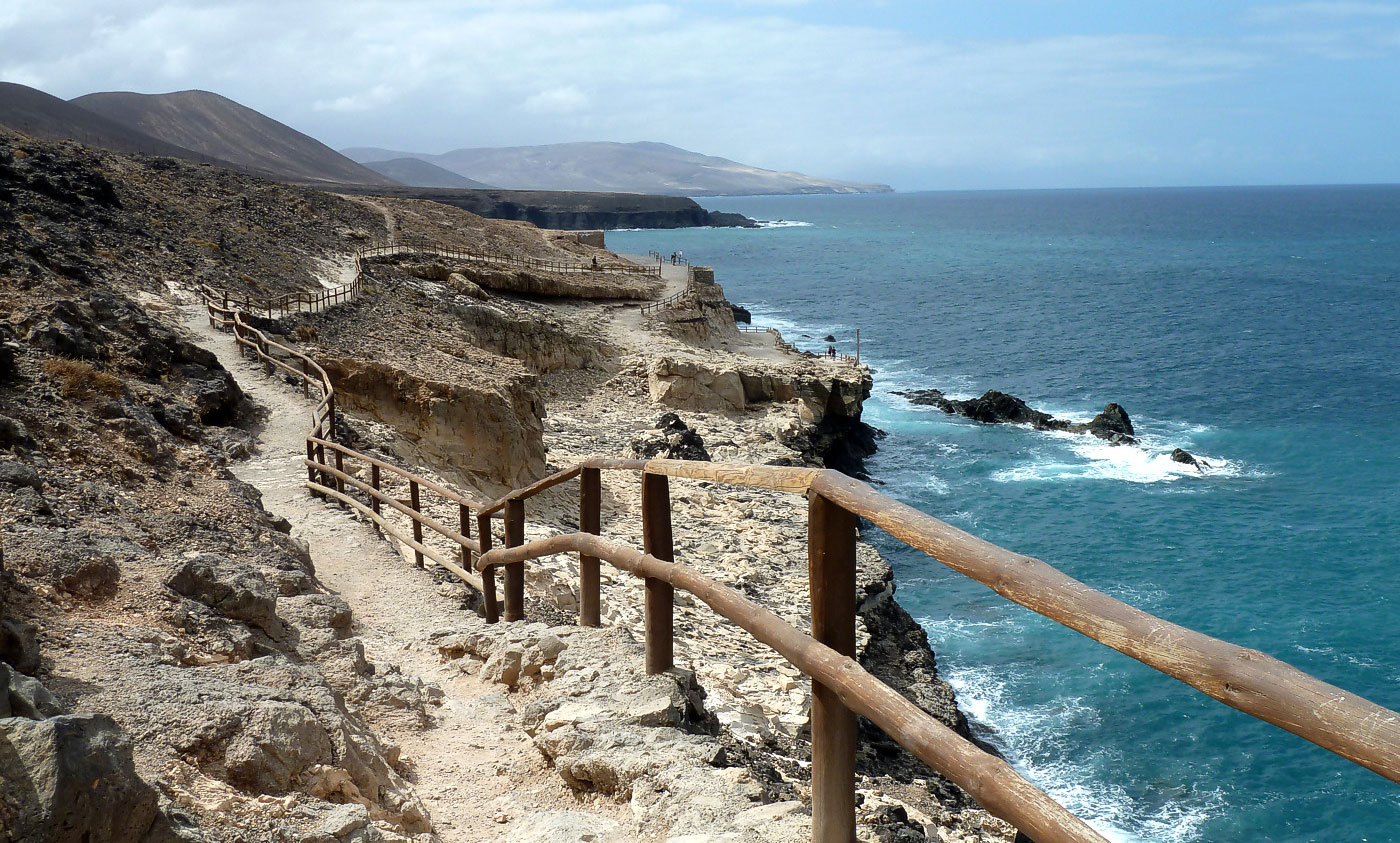
Ajuy is a place where throngs of tourists flock to the few restaurants you find in the village to enjoy fresh fish, but if you don’t like crowds we recommend having some home-made rations in Pájara, before getting to Ajuy.
And to help digestion, nothing better than going for a walk in El barranco de Las Peñitas , which you can access form the village of Buen Paso (between Ajuy and Pájara). There you find a cliff made of granite blocks, which offers a landscape very different from the rest of the island. Big blocks of granite rise up on the edges of what, no doubt, once must have been a little river, when there was water. Nowadays there is nothing but pools of stagnant water which flow on the rainy days of winter. This area of the island is a treasure for mountain climbers, as this is one of the few areas in Fuerteventura where you can climb.
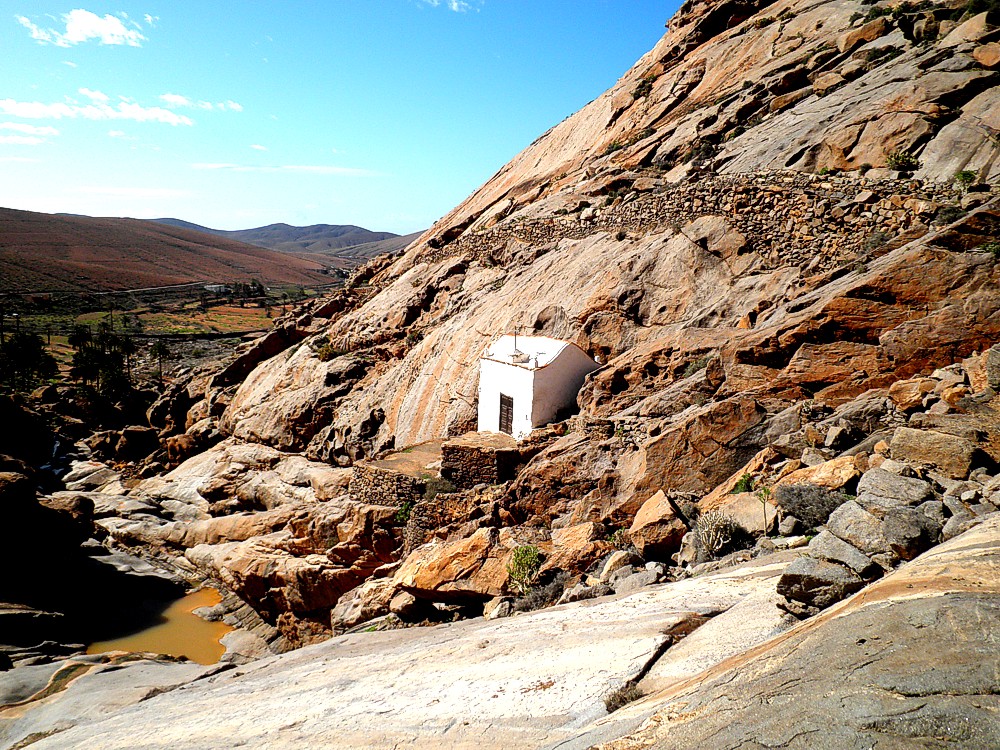
El barranco de Las Peñitas is named after La ermita de la Virgen de la Peña (shrine), placed within it, another story that makes up the past of these lands; and at the highest part of the cliff we find the well known “Presa de las Peñitas”, with no apparent function at present.
And after this evening walk it’s time to head back north. This time we suggest taking the FV-30, after Pájara, towards Tuineje and Antigua, to avoid the winding road in Betancuria.
If you have skipped some steps of the way and you have still some time to spare, in Antigua you can visit the “Museo del Queso Majorero”, where you’ll get first hand information about the secrets in the production of such a goat milk delicacy.
Have a nice journey back and rest tonight, so as to get ready for the fourth and last day of this tour, when we’ll take you to find out the south of Fuerteventura and its never ending beaches, typical of a paradise whose beauty is beyond our wildest dreams.
Fuertecharter team.
